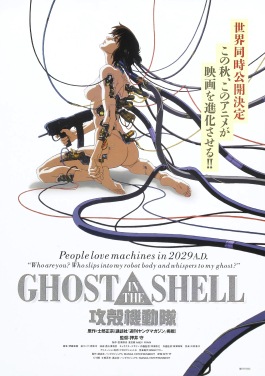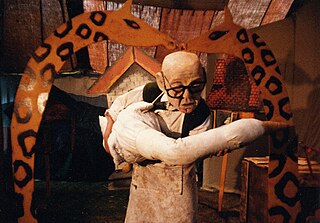
Animation is a filmmaking technique by which still images are manipulated to create moving images. In traditional animation, images are drawn or painted by hand on transparent celluloid sheets (cels) to be photographed and exhibited on film. Animation has been recognized as an artistic medium, specifically within the entertainment industry. Many animations are either traditional animations or computer animations made with computer-generated imagery (CGI). Stop motion animation, in particular claymation, has continued to exist alongside these other forms.

Stop motion is an animated filmmaking and special effects technique in which objects are physically manipulated in small increments between individually photographed frames so that they will appear to exhibit independent motion or change when the series of frames is played back. Any kind of object can thus be animated, but puppets with movable joints or plasticine figures are most commonly used. Puppets, models or clay figures built around an armature are used in model animation. Stop motion with live actors is often referred to as pixilation. Stop motion of flat materials such as paper, fabrics or photographs is usually called cutout animation.

A puppeteer is a person who manipulates an inanimate object called a puppet to create the illusion that the puppet is alive. The puppet is often shaped like a human, animal, or legendary creature. The puppeteer may be visible to or hidden from the audience.

Puppetry is a form of theatre or performance that involves the manipulation of puppets – inanimate objects, often resembling some type of human or animal figure, that are animated or manipulated by a human called a puppeteer. Such a performance is also known as a puppet production. The script for a puppet production is called a puppet play. Puppeteers use movements from hands and arms to control devices such as rods or strings to move the body, head, limbs, and in some cases the mouth and eyes of the puppet. The puppeteer sometimes speaks in the voice of the character of the puppet, while at other times they perform to a recorded soundtrack.

A marionette is a puppet controlled from above using wires or strings depending on regional variations. A marionette's puppeteer is called a marionettist. Marionettes are operated with the puppeteer hidden or revealed to an audience by using a vertical or horizontal control bar in different forms of theatres or entertainment venues. They have also been used in films and on television. The attachment of the strings varies according to its character or purpose.
Visual effects is the process by which imagery is created or manipulated outside the context of a live-action shot in filmmaking and video production. The integration of live-action footage and other live-action footage or CGI elements to create realistic imagery is called VFX.

Shadow play, also known as shadow puppetry, is an ancient form of storytelling and entertainment which uses flat articulated cut-out figures which are held between a source of light and a translucent screen or scrim. The cut-out shapes of the puppets sometimes include translucent color or other types of detailing. Various effects can be achieved by moving both the puppets and the light source. A skilled puppeteer can make the figures appear to walk, dance, fight, nod and laugh.

Ghost in the Shell is a 1995 adult animated tech noir cyberpunk action thriller film directed by Mamoru Oshii from a screenplay by Kazunori Itō. The film is based on the 1989–91 manga of the same name by Masamune Shirow. It stars the voices of Atsuko Tanaka, Akio Ōtsuka, and Iemasa Kayumi. It is a Japanese-British international co-production between Kodansha, Bandai Visual and Manga Entertainment, with animation provided by Production I.G.
Digital puppetry is the manipulation and performance of digitally animated 2D or 3D figures and objects in a virtual environment that are rendered in real-time by computers. It is most commonly used in filmmaking and television production but has also been used in interactive theme park attractions and live theatre.

The Adventures of Prince Achmed is a 1926 German animated fairytale film by Lotte Reiniger. It is the oldest surviving animated feature film. The Adventures of Prince Achmed features a silhouette animation technique Reiniger had invented that involved manipulated cutouts made from cardboard and thin sheets of lead under a camera. The technique she used for the camera is similar to Wayang shadow puppets, though hers were animated frame by frame, not manipulated in live action. The original prints featured color tinting. Reiniger also used the first form of a multiplane camera in making the film, one of the most important devices in pre digital animation.

Horse and Bamboo Theatre or Horse + Bamboo Theatre is a British theatre company founded in 1978 by Bob Frith. The company was known for its use of distinctive masks and visual, puppet, physical, music-based forms rather than text. Until 2018 it worked internationally as well as from its base, then known as The Boo, in Waterfoot, Rossendale, Lancashire, UK. Since 2012 the emphasis of its work has been increasingly in serving its local community, with the last touring shows taking place in 2019. In 2022 the venue was ‘de-branded’ to ‘Horse and Bamboo’.

Tholu bommalata is the shadow puppet theatre tradition of the state of Andhra Pradesh in India with roots dating back to 3rd century BCE. Its performers are part of a group of wandering entertainers and peddlers who pass through villages during the course of a year and offer to sing ballads, tell fortunes, sell amulets, perform acrobatics, charm snakes, weave fishnets, tattoo local people and mend pots. Tholu bommalata has a history of consistent royal patronage. It is the ancestor of Wayang, the Indonesian puppet theatre play which has been a staple of Indonesian tourism and designated by UNESCO as Intangible Cultural Heritage of Humanity.

Mirsolav Trejtnar is a master puppeteer and teacher of puppetry.

Quest is a 1996 German animated short film directed by Tyron Montgomery, written (story) and produced by Thomas Stellmach at the University of Kassel - Art College. After four years of production it won several awards including the Academy Award for Best Animated Short Film.

A puppet is an object, often resembling a human, animal or mythical figure, that is animated or manipulated by a person called a puppeteer. Puppetry is an ancient form of theatre which dates back to the 5th century BC in ancient Greece.
The Indian Animation Industry encompasses traditional 2D animation, 3D animation and visual effects for feature films. In 1956, Disney Studios animator Clair Weeks, who had worked on Bambi, was invited to Films Division of India in Mumbai to establish and train the country's first animation studio as part of the American technical co-operation mission. He trained a core group of Indian animators, whose first production was a film called The Banyan Deer (1957). Veteran animator Ram Mohan started his career at Films Division's Cartoon Unit.

Kooky is a 2010 Czech action comedy film directed by Jan Svěrák. The film combines techniques of puppet animation, stop motion and live action. It tells the story of a six-year-old asthmatic boy whose parents throw his favorite toy away, an old teddy bear named Kooky. The boy, however, secretly sneaks out of the house at night, to retrieve Kooky from the garbage can and bring him back home. Due to that, the boy gets ill. In his feverish dreams, Kooky comes to life in the landfill, escapes into a mysterious forest and begins its journey amongst the rough-and-ready creatures of the forest.
Events from the year 1984 in Scotland.
Birgitta Hosea is a British animation artist of Scottish and Swedish descent. She explores diverse themes such as identity, spirituality and traces of existence. Her work combines a range of media such as shadow puppets, drawing, manipulated video, paper sculpture, animation, holographic projection, live video feeds and interactive technology – with live performance.

A giant puppet is a puppet which is tall enough to be easily visible to a street crowd while being manipulated by puppeteers, on the same level. It is therefore most suitable for processions, street theatre and performance art, although some large theatrical animations can be used for the same purpose. Giant puppets are usually articulated and made from a lightweight material. Some are manipulated by puppeteers using rods, strings, stilts, other mechanisms, or a combination of these. Giant puppets have been used worldwide for street entertainment, celebrations or other purposes from ancient times, and they continue in use and in development today. Of the traditional giant rod puppets, the Chinese dragon New Year puppet is "perhaps the most recognized form of the parade puppet". Of the most recent examples, Royal de Luxe of France has produced a notable set of giant string puppets.














